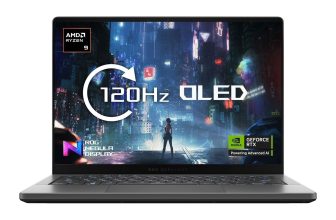
Researchers at Washington University School of Medicine in St. Louis, working with scientists at Northwestern University, have created a noninvasive strategy to treat one of the most aggressive and deadly forms of brain cancer. Their method relies on carefully designed nanostructures made from extremely small materials that can carry potent cancer-fighting compounds into the brain through simple nasal drops. In studies involving mice, this approach successfully treated glioblastoma by stimulating the brain’s immune system. The technique also avoids the invasiveness seen in similar treatments now under development.
The findings were published this month in PNAS.
Why Glioblastoma Is So Difficult to Treat
Glioblastoma develops from astrocytes, a type of brain cell, and is the most common malignant brain tumor, affecting about three in every 100,000 people in the U.S. The disease advances rapidly and is almost always fatal. One of the biggest obstacles to treating it is the challenge of getting effective medicine into the brain.
“We wanted to change this reality and develop a noninvasive treatment that activates the immune response to attack glioblastoma,” said Alexander H. Stegh, PhD, a professor and vice chair of research in the WashU Medicine Taylor Family Department of Neurosurgery and a co-corresponding author of the study. Stegh also serves as research director of The Brain Tumor Center at Siteman Cancer Center, based at Barnes-Jewish Hospital and WashU Medicine. “With this research, we’ve shown that precisely engineered nanostructures, called spherical nucleic acids, can safely and effectively activate powerful immune pathways within the brain. This redefines how cancer immunotherapy can be achieved in otherwise difficult-to-access tumors.”
Reactivating the Immune System With STING Pathway Nanomedicine
Glioblastoma is often labeled a “cold tumor” because it does not naturally provoke a strong immune response. Unlike “hot tumors,” which are more responsive to immunotherapies, glioblastoma tends to evade detection. Scientists have been exploring ways to stimulate a pathway known as STING, short for stimulator of interferon genes. This pathway activates when cells detect foreign DNA, setting off immune defenses.
Previous research showed that drugs activating the STING pathway can prime the immune system to attack glioblastoma. The drawback is that these drugs degrade quickly and must be injected directly into the tumor to be effective. Since multiple doses are needed, this requires highly invasive procedures.
“We really wanted to minimize patients having to go through that when they are already ill, and I thought that we could use the spherical nucleic acid platforms to deliver these drugs in a noninvasive way,” said Akanksha Mahajan, PhD, a postdoctoral research associate in Stegh’s lab and first author of the study.
Building Gold-Core Nanostructures for Nose-to-Brain Delivery
To address this challenge, Stegh’s group partnered with co-corresponding author Chad A. Mirkin, PhD, director of the International Institute for Nanotechnology and the Rathmann Professor of Chemistry at Northwestern University. Mirkin developed spherical nucleic acids, which are nanoscale particles coated densely with DNA or RNA. These structures have been shown to be more effective than traditional delivery systems.
Together, the teams designed a specialized version of spherical nucleic acids featuring gold nanoparticle cores and short DNA fragments that activate the STING pathway in targeted immune cells. To move these compounds into the brain, the researchers used the nasal passages as the entry point.
Intranasal delivery has been studied before for brain-targeted treatments, but no nanoscale therapy had previously shown the ability to activate immune responses against brain tumors using this route.
“This is the first time that it has been shown that we can increase immune cell activation in glioblastoma tumors when we deliver nanoscale therapeutics from the nose to the brain,” Mahajan said.
Tracking Nanodrops as They Travel to the Brain
The researchers aimed to demonstrate both selective delivery to the brain and proper activation of the target immune cells. They added a molecular tag to the spherical nucleic acids that glowed under near-infrared light. After administering the nanodrops to mice with glioblastoma, they observed the particles traveling along the pathway of the main nerve connecting the facial region to the brain.
Once there, the immune response triggered by the nanomedicine concentrated in specific immune cells within the tumor. Some activity was also detected in nearby lymph nodes. Importantly, the therapy did not spread widely throughout the body, helping reduce the likelihood of unwanted side effects.
Further examination showed that immune cells in and around the tumor had activated the STING pathway, enabling them to mount a stronger attack against the cancer.
Combining Treatments to Eradicate Tumors and Prevent Recurrence
When the nanotherapy was paired with medicines that help activate T lymphocytes, another key type of immune cell, the two-dose treatment eliminated tumors in mice and produced long-lasting immunity that prevented the cancer from returning. These outcomes were significantly better than those seen with current STING-targeting therapies.
Stegh noted that stimulating the STING pathway alone is unlikely to cure glioblastoma. The tumor uses several tactics to weaken or shut down the immune response. His group is exploring ways to build additional immune-activating features into their nanostructures, which could allow multiple therapeutic targets to be addressed through a single treatment.
“This is an approach that offers hope for safer, more effective treatments for glioblastoma and potentially other immune treatment-resistant cancers, and it marks a critical step toward clinical application,” Stegh said.
Study Funding and Disclosures
This work was supported by the National Cancer Institute of the NIH (grant numbers P50CA221747 and R01CA275430), the NIH (grants R01CA120813, R01NS120547, and R01CA272639), the Melanoma Research Foundation, the Chicago Cancer Baseball Charities at the Lurie Cancer Center of Northwestern University and grants from Cellularity, Alnylam, and AbbVie. Imaging at Siteman Cancer Center Small Animal Cancer Imaging was supported by NIH instrumentation grants S10OD027042, S10OD025264, and National Cancer Institute Cancer Center grant P30CA091842. PET and MRI imaging was supported by Robert H. Lurie Comprehensive Cancer Center Grant P30CA060553.
The content is solely the responsibility of the authors and does not necessarily represent the official views of the NIH.
Competing interests: Alexander Stegh is a shareholder of Exicure Inc., which develops SNA therapeutic platforms. Mirkin is a shareholder in Flashpoint, which develops SNA-based therapeutics. Stegh and Mirkin are co-inventors on patent US20150031745A1, which describes SNA nanoconjugates to cross the blood-brain barrier.






